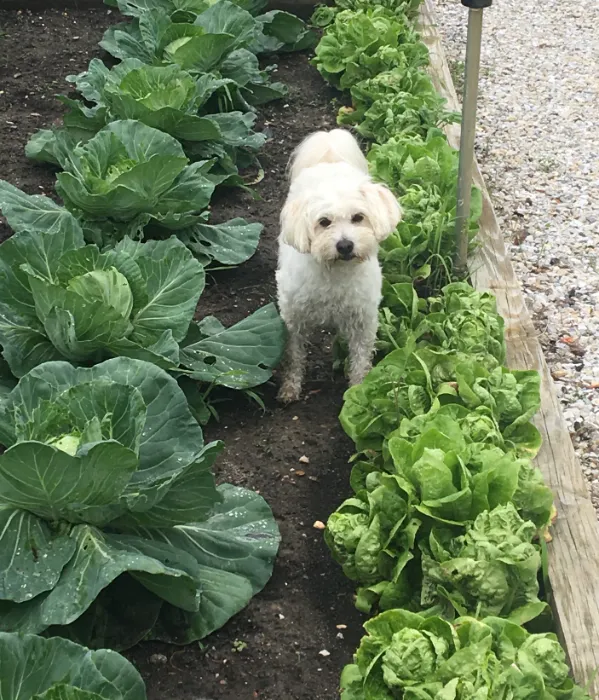How much Soil is needed for the Root depth of Vegetables?

Disclosure: Some of the links in this article may be affiliate links, which can provide compensation to me at no cost to you if you decide to purchase. As an Amazon associate I earn from qualifying purchases
How much soil is really needed in depth to grow plants? This is a question everyone should ask when they are growing in raised beds or pots.
The top 6 inches of soil is where nutrients such as compost and fertilizers are added to the bed from above and lightly tilled in. So are we saying that you only need 6 Inches of soil to grow all vegetables?? That would be a BIG NO!
Larger vegetables will travel deeper into the soil if nutrients and water are available, and this also brings more trace minerals to the plant. When plants are able to send their roots deeper, they are less likely to fall over in windy conditions or if the ground becomes too wet.
Shallow-rooted plants such as broccoli, brussel sprouts and cauliflower might need staking to ensure they stay upright as they grow to maturity.
The consequences of having shallow soil are many.
Firstly, shallow soil can cause plants to be stressed due to lack of adequate nutrients, water, and air. This leads to weakened plants that are susceptible to disease and pest infestation.
Shallow soil can also lead to an increased risk of crop failure. This is because the roots of the plants are unable to get the nutrient-rich soil they need to grow and thrive.
When preparing a garden bed or raised garden for planting, it is helpful to know the root depth of vegetable crops since this has a bearing on where you may decide to plant and for optimal harvest.
For example, in our garden we may plant shallow rooted crops like lettuce in raised beds or pots (from Amazon) where the soil is not as deep because their roots only need about 12 inches or less of soil to thrive.
Plants with deeper roots, such as tomatoes, thrive in more soil depth and when you are talking tomatoes, everyone wants a great harvest for those summer salads and BLT’s.
Some raised beds are set on cement patios or on gravel surfaces, which prevent roots from going deeper than the height of bed sides. In these cases, it is especially helpful to know the soil depth requirements of different vegetable crops.
Gardeners can compensate by building the raised beds higher to allow for more root space. Taller raised patio beds (from Amazon) deeper rooted crops to be planted even if there is no soil beneath the bed, but drainage must be provided by blocking the bed up an inch or so, or drilling drain holes near the bottom of the bed sides.
How Deep do your raised beds or containers need to be for Vegetables?
Shallow Rooting (12 to 18 Inches) | Medium Rooting (18 to 24 Inches) | Deep Rooting (24 to 36+ Inches) |
Arugula, Broccoli, Brussel Sprouts,Cabbage, Cauliflower, Celery, corn, Endive, Garlic, Lettuce, Onions, Leeks, Chives | Beans, Beets, Cantaloupe, Carrots, Chard, Cucumber, Eggplant, Kale, Peas, Peppers, Summer Squash | Artichokes, asparagus, Lima Beans, Okra, Parsnips, Pumpkins, Rhubarb, Winter squash, Sweet Potatoes, Tomatoes, Watermelon |
The only exception I have for the depth of containers is Grow Bags(from Amazon) If you want to garden in containers, this is the way to go on your patio.
In Grow Bags, the roots have more air circulation and don’t need great depths of soil. The roots naturally air prune their roots for greater absorption of nutrients and water.
We would suggest using grow bags(from Amazon)instead of plastic containers or buckets on your patio for vegetables like tomatoes for better harvests.
If your raised beds(from Amazon)are on the ground, you don’t have to worry about the proper soil depth, but if you container garden or have a raised bed on the patio or gravel, then it would be imperative to consider the soil depth to achieve success in growing vegetables in your backyard.
Many of us love to get our hands in the soil and grow nutritious vegetables, so we are glad to help you in this endeavor with some better knowledge in growing in the right soil depth. Happy Planting!
Would you like to read more?:
19 Shallow Rooted Plants for Your Raised Beds
Create A Wildflower Meadow: Our Simple Guide
Review of the best raised garden beds for Seniors or anyone of any age
Best Solution to Gardening in Small Spaces: Patio Tomatoes
What to Look for When Buying Garden Tools for Ergonomics
EGO Battery Operated Chainsaw: A Backyard Gardener's Review
The Best Vegetable Garden Layouts for Beginners
Disclosure: Some of the links in this article may be affiliate links, which can provide compensation to me at no cost to you if you decide to purchase. As an Amazon associate I earn from qualifying purchases

